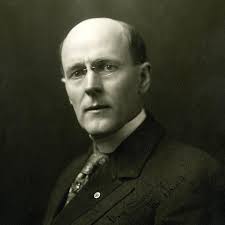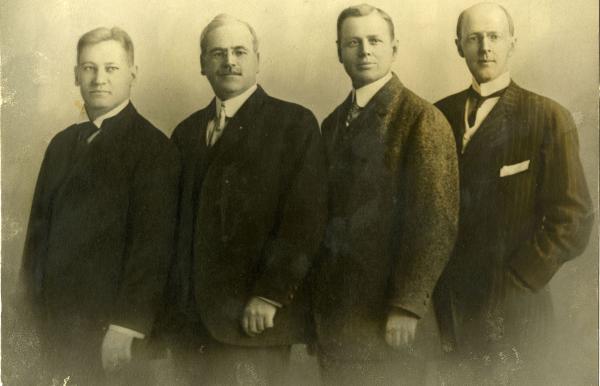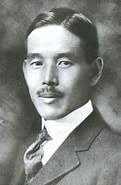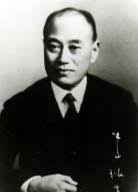Rotary was born
His name is Paul Harris.
At the beginning of the 20th century, Chicago was experiencing significant economic development and a lack of commercial ethics.Around that time, Paul Harris, a young lawyer who had an office here, couldn't stand this trend, so he talked with three of his friends, and they started trading fairly and trustfully, and their business relationships continued to become close friends. I came up with the idea of a Rotary Club meeting with the aim of increasing the number of friends that could develop into relationships.The name Rotary comes from the fact that each member of the organization rotates meetings around the office.
Thus, on February 1905, 2, the Rotary Club of Chicago was born.

Rotary clubs around the world

Since then, like-minded clubs have sprung up all over the world, crossing national borders and now spread to more than 200 countries and regions, with 35,399 clubs and a total of 1,207,913 members (RI official announcement on July 2016, 7). increase.The association of these clubs around the world is called Rotary International (RI).
Thus, historically, Rotary is a gathering of business people and professionals who value work ethics.As the organization has expanded to all corners of the globe, Rotary has opened its eyes to the world and has been called upon to provide a wide range of service, and it is now making significant contributions in many ways.
How the Rotary Club was established in Japan
In 1918, Umekichi Yoneyama, a senior executive at Mitsui Bank, joined a national financial survey team and visited Dallas, Texas. I was moved by a wonderful activity.
日本に帰国してからロータリーを日本に導入する計画を立て、1920年(大正9年)10月20日三井銀行のクラブに24名が出席して創立総会を開き、日本で初めて東京ロータリークラブが誕生した。翌1921年(大正10年)4月1日付けで国際ロータリーより登録番号855をもって承認されました。


History|1905-2019
| 1905 | Foundation of Rotary | Former attorney Paul P. Harris held his first Rotary meeting on February 2 in Chicago, Illinois, USA.Harris envisioned a club that would bring together a diverse range of local professionals. |
| 1907 | early service projects | The Rotary Club of Chicago consulted with civil society about the need for public toilets to improve hygiene in the city. |
| 1908 | Rotary's second city | In November, a second Rotary club was established in San Francisco, California, USA, making it Rotary's second largest city. |
| 1910 | Establishing a federation of clubs | Representatives of 1910 Rotary clubs met at the first Rotary convention in Chicago in 1 to form the National Federation of Rotary Clubs.The Articles of Incorporation and Bylaws were adopted, and the Board of Directors was elected.Rotary clubs shared core values while maintaining autonomy as member clubs of federations. |
| 1911 | The Rotarian magazine | The first issue of The Rotarian was published in January 1911, with the goal of reaching all clubs with the same message and reporting news from clubs and members.In 1, the name of the magazine was changed to Rotary. |
| 1911 | Rotary Motto | At the 1911 convention, the first words of Rotary's motto, Service Above Self, were adopted.Also adopted were the early words of the second motto, "One Profits Most Who Serves Best."These two slogans were approved as official slogans in 1950 ("He Profits Most Who Serves Best" and "Service Above Self"). |
| 1912 | Creation of Rotary International | Rotary becomes "International Rotary" In April 1912, Rotary became an international organization with the establishment of the Rotary Club of Winnipeg in Canada.As a result, the name of the federation was changed to "International Federation of Rotary Associations" and in 4 the name "Rotary International" was adopted. |
| 1912 | Expand to Europe | Rotary expands into Europe with the charter of the Rotary Club of London (UK) in August.The Rotary Club of Dublin (Ireland) had been formed earlier, but was not officially chartered in May 8. In January 1913, a club was chartered in Madrid, Spain, and Rotary's presence spread across continental Europe. |
| 1914 | Roundabouts of Great Britain and Ireland | In May, the Rotary Clubs of Great Britain and Ireland form the Federation of Rotary Clubs of Great Britain to bring together the growing number of clubs in the UK. In 5 the name was changed to the Rotary International of Great Britain and Ireland (RIBI) to clarify its relationship with Rotary International. |
| 1917 | The Rotary Foundation | President Arch Klumph proposed the establishment of a fund to "Do Good in the World," which became the predecessor of The Rotary Foundation.The first donation was $26 from the Rotary Club of Kansas City (USA). In 50, it was officially named "The Rotary Foundation" and a board of trustees was created. |
| 1919 | Expand to South America | In February 1919, Rotary expanded into South America with the charter of a club in Montevideo, Uruguay. A Rotary club was established in Argentina in 2.The third club in South America was founded in Brazil in 1920. |
| 1919 | 1st International Assembly | Rotary hosts the first International Assembly, an annual training event for incoming leaders, in Chicago.Since then, this event has been held annually as an opportunity for the next generation of leaders from around the world to interact. |
| 1919 | Expand to Asia | A Rotary club was chartered in Manila, the Philippines, in June 1919, and four months later another club was chartered in Shanghai, China. In January 6, the Rotary Club of Calcutta was established, the first club in India. |
| 1920 | Tokyo Rotary Club, the first Rotary club in Japan, established | The establishment of Japan's first Rotary Club was triggered by two Japanese businessmen, Mr. Kisanji Fukushima and Mr. Umekichi Yoneyama, who met in the United States. Upon returning to Japan in the early 1920s, Fukushima and Yoneyama founded the Tokyo Rotary Club with 22 other founding members, with Fukushima as the club's first secretary and Yoneyama as its first president. On April 1921, 4, Japan's first Rotary Club of Tokyo was certified as a member. |
| 1921 | Expansion to Oceania and Africa | The Rotary Club of Melbourne became the first club in Australia to be chartered in April. In May, two Rotary clubs were chartered in New Zealand, Auckland and Wellington. In July, a club was established in Johannesburg, South Africa, becoming the first club on the African continent. |
| 1921 | put peace first | The promotion of peace and goodwill was added to the RI Constitution at the Edinburgh (Scotland) Convention, the first international convention held outside the United States.The promotion of peace was also included in the Object of Rotary, adopted at the 1922 Los Angeles International Convention (USA). |
| 1943 | four tests | Rotary adopted the Four-Way Test, which has become one of the most printed and cited codes of business ethics in the world. The Four Tests was drafted by Herbert J. Taylor, a member of the Rotary Club of Chicago, in 1932 to rebuild an aluminum company that was on the brink of bankruptcy during the Great Depression. |
| 1945 | Rotary and the United Nations | Rotary International advised the US delegation to the United Nations Charter Conference in San Francisco.Eleven Rotarians formally represented Rotary in this role, and some members attended as representatives or advisors of their own countries. |
| 1947 | Paul Harris passed away | Rotary founder Harris passed away in January after a long illness.More than $1 million in donations from members over the next 18 months was used for The Rotary Foundation Scholarship Program. |
| 1947 | First Foundation Program | The Rotary Foundation provided scholarships for postgraduate studies with the aim of fostering international understanding.After that, the educational support continued, and it became known by various names such as "Ambassadorial Scholarships" and "Rotary Scholarships." |
| 1957 | Start Donor Verification | In 1957, Rotary created the Paul Harris Fellowship to show its gratitude to donors and to encourage continued giving to the Foundation. |
| 1962 | Youth Program "Interact" | The first Interact club was established and chartered on November 1962, 11 at Melbourne High School in Florida, USA.Interact is an opportunity for high school students to develop leadership skills. |
| 1965 | GRANTS TO SUPPORT SERVICE PROJECTS | Launched Matching Grants, the first grant program for club and district service projects. |
| 1965 | Group Study Exchange (GSE) | The Group Study Exchange (GSE) program allows young professionals to visit each other's countries to learn about different cultures and gain greater insight into their profession.This tradition continues today through the Vocational Training Team (VTT). |
| 1968 | Rotaract for young people | The first Rotaract club is chartered at the University of North Carolina at Charlotte, USA.Originally created as a program for college students and young professionals, Rotaract was redefined in 2019 to become a member club of Rotary. |
| 1971 | Rotary Youth Leadership Awards (RYLA) | The Rotary Youth Leadership Awards (RYLA) was created.Since then, events and training camps have been held for high school students and young people to hone their leadership, communication, and problem-solving skills. |
| 1975 | Rotary Youth Exchange | Since the 1920s, student exchanges have been conducted by Rotary clubs, and in 1975, Rotary Youth Exchange was recognized as an official program administered by clubs and districts. |
| 1978 | Health, Hunger and Humanity (3-H) Grants | Rotary announces grant programs for health, hunger, humanity and social progress.Rotary members can use these grants to improve access to safe water and health care, improve literacy, and provide health care, paving the way for today's "global grants." . |
| 1979 | Rotary International launches polio eradication effort | A multi-year grant project to immunize children in the Philippines kickstarted Rotary's polio eradication efforts. |
| 1985 | Rotary launches PolioPlus | The PolioPlus program was launched to support Rotary's commitment to eradicate polio through immunization.Polio eradication remains Rotary's top priority, and PolioPlus supports the work of Rotary and its partners. |
| 1987 | Women join Rotary | U.S. Supreme Court ruling allows women to join Rotary in the United States. Since 1989, women have been admitted to clubs around the world. |
| 1988 | Peace Forum and Peace Promotion | The Rotary Foundation hosts its first Peace Forum in Evanston, Illinois, USA, as part of a pilot program.The program has since expanded to include peace-focused events under various names. |
| 1988 | Partners in Polio Eradication | Rotary's immunization efforts in the Philippines and international fundraising successes inspired the World Health Assembly to set the goal of eradicating polio worldwide.Rotary is a founding member of the Global Polio Eradication Initiative (GPEI). |
| 1999 | Peace Center Supporting the Empowerment of Leaders | The Trustees of The Rotary Foundation approve the establishment of the Rotary Center for International Studies in the field of peace and conflict resolution (now the "Peace Center").The first batch of Rotary Peace Fellows began their studies in 2002. |
| 2004 | Created the Arch Klumph Society to authenticate donors | The Arch Klumph Society (AKS) is established to recognize individuals, couples and groups that donate $250,000 or more to the Foundation.The first AKS Dinner was held at the 1 Chicago International Convention. |
| 2009 | Rotary and USAID partnership | In 2009, Rotary launched a unique public-private partnership with the United States Agency for International Development (USAID).Combining Rotary members' business skills and community leadership with USAID's technical expertise and government relationships enables water and sanitation improvement efforts. |
| 2013 | A new subsidy model focused on impact | The Rotary Foundation introduced a simplified grant model consisting of district and global grants and discontinued Matching Grants, Ambassadorial Scholarships, and Group Study Exchange programs. |
| 2014 | Progress towards polio eradication | India was once considered one of the most difficult places to eradicate polio. In 2014, the WHO South-East Asia Region was certified polio-free after three years of zero cases of wild poliovirus in India.In Nigeria, continued efforts to vaccinate children who had previously been under-vaccinated due to security in the north of the country were successful in maintaining zero cases for three years. The WHO Africa Region was certified free of wild poliovirus in 3. |
| 2019 | Support Big Initiatives with Program of Scale Grants | In 2019, the Foundation introduced a “Large Program Grant” to fund programs that have already demonstrated results.Recipients of these grants are vetted and selected to provide members with funding for long-term, high-impact programs in Rotary's areas of focus. In 2021, Partners for Malaria-Free Zambia was selected as the recipient of the first Large Program Grant. |

